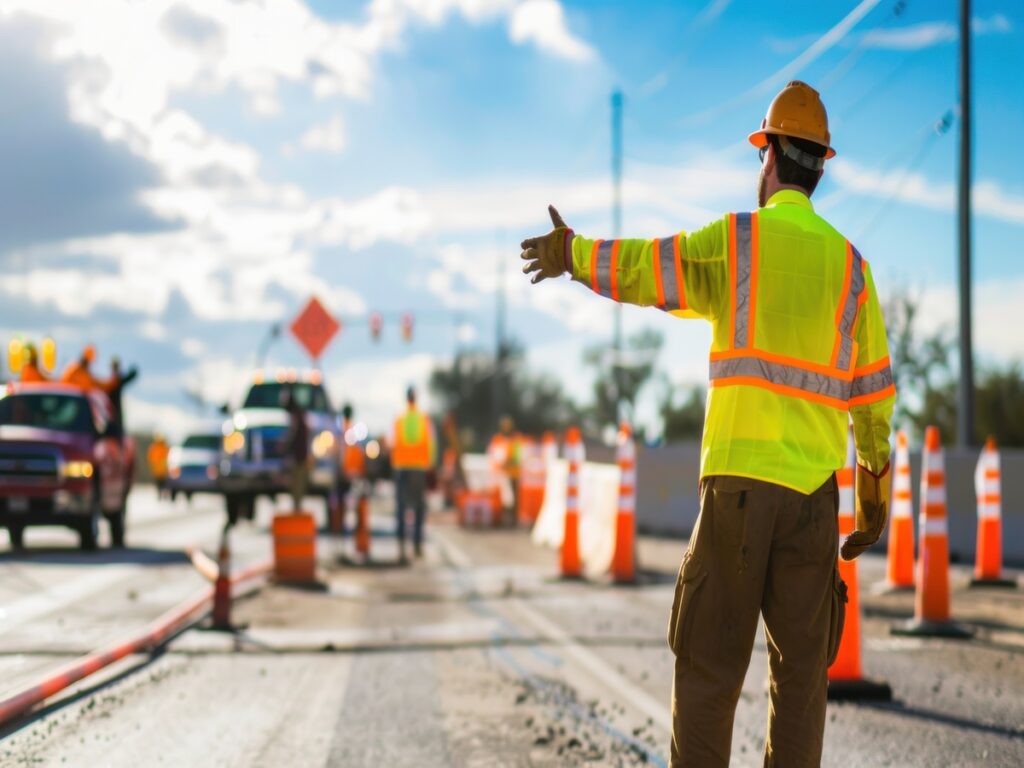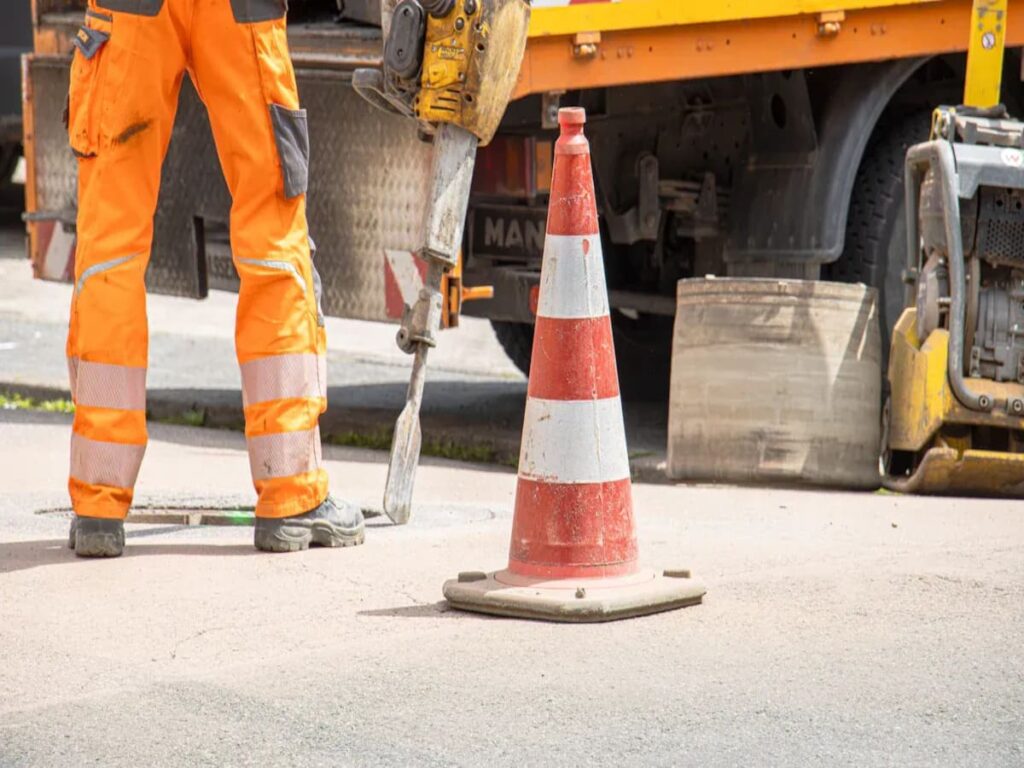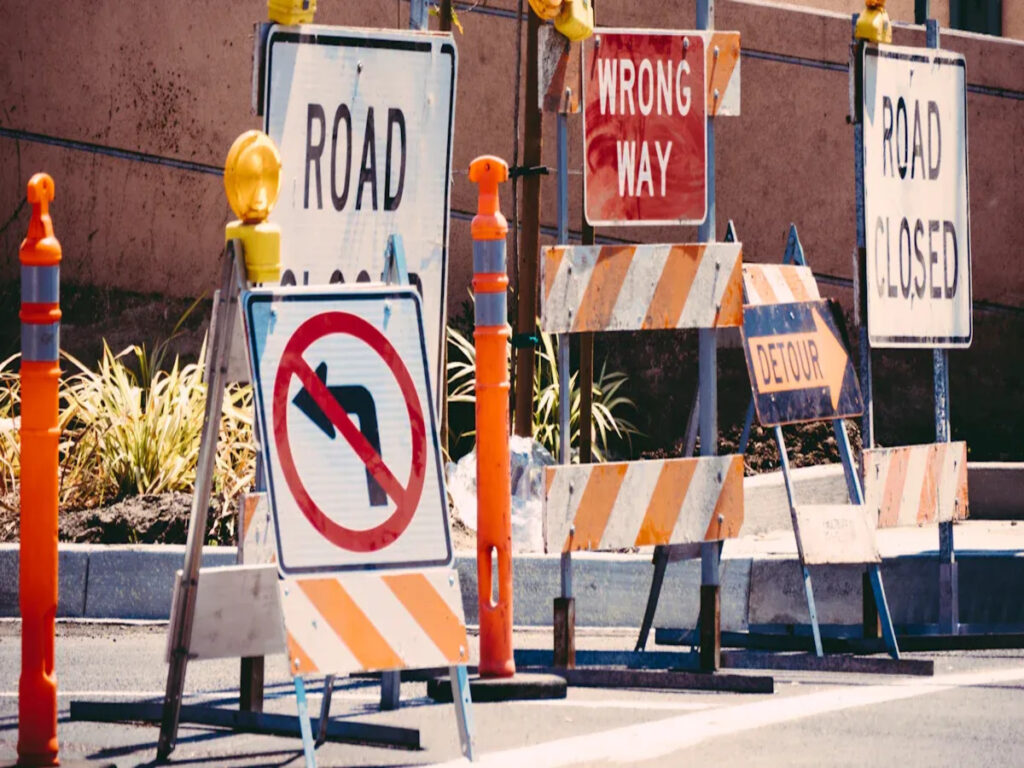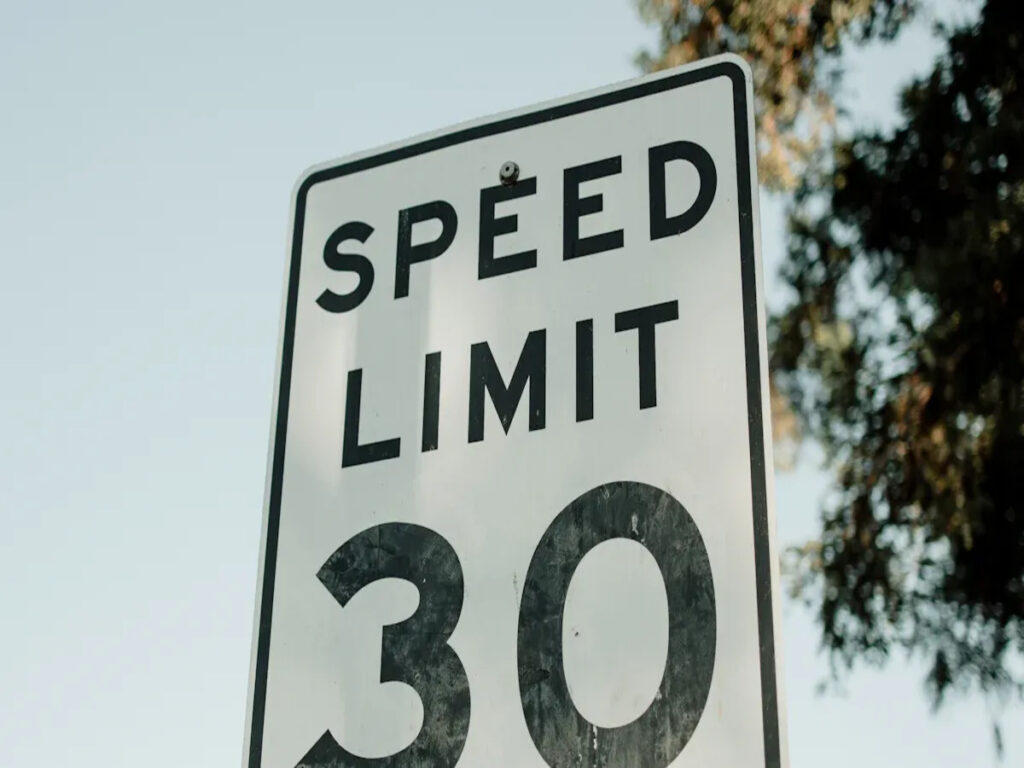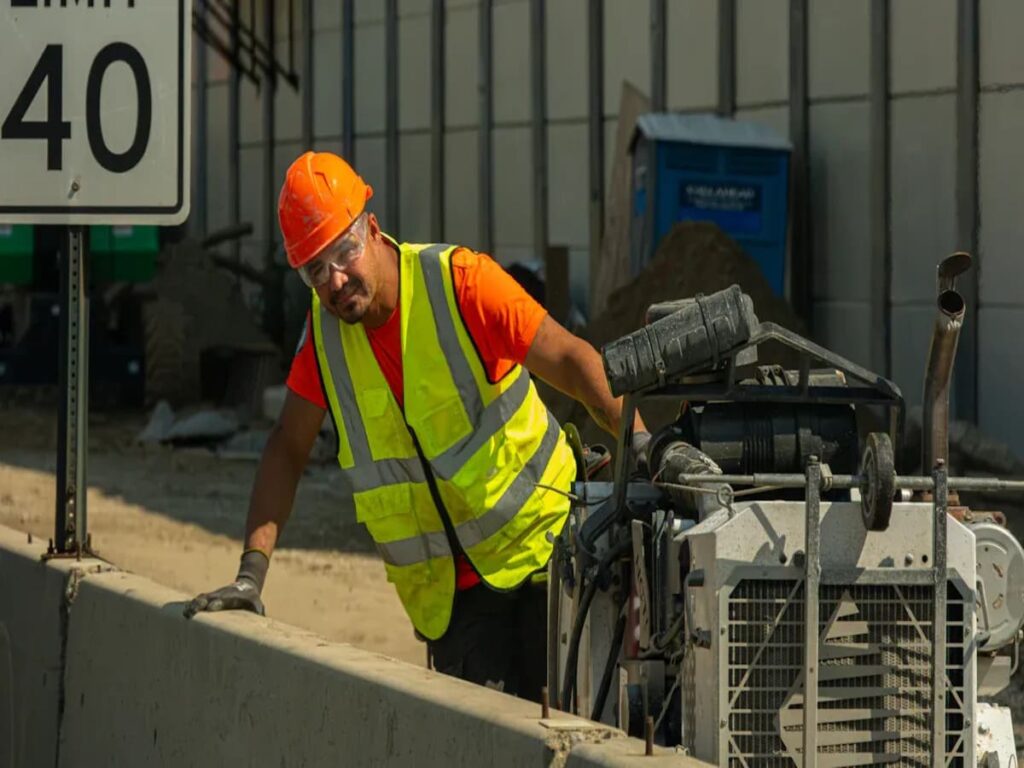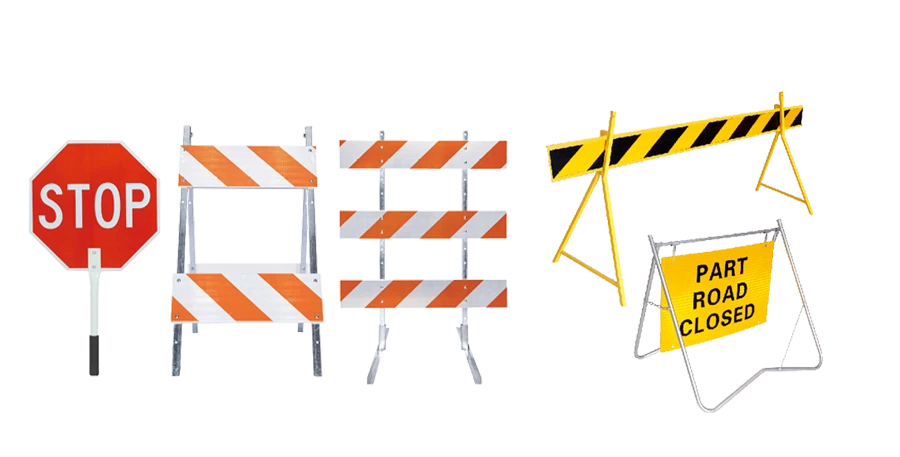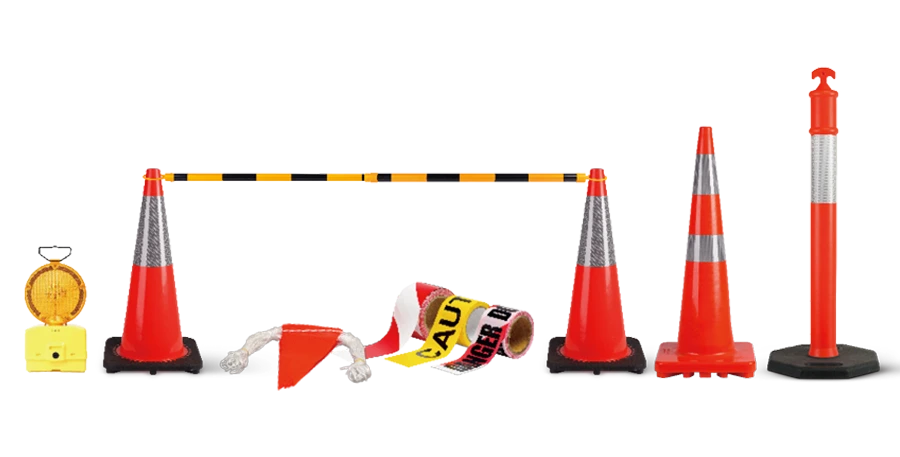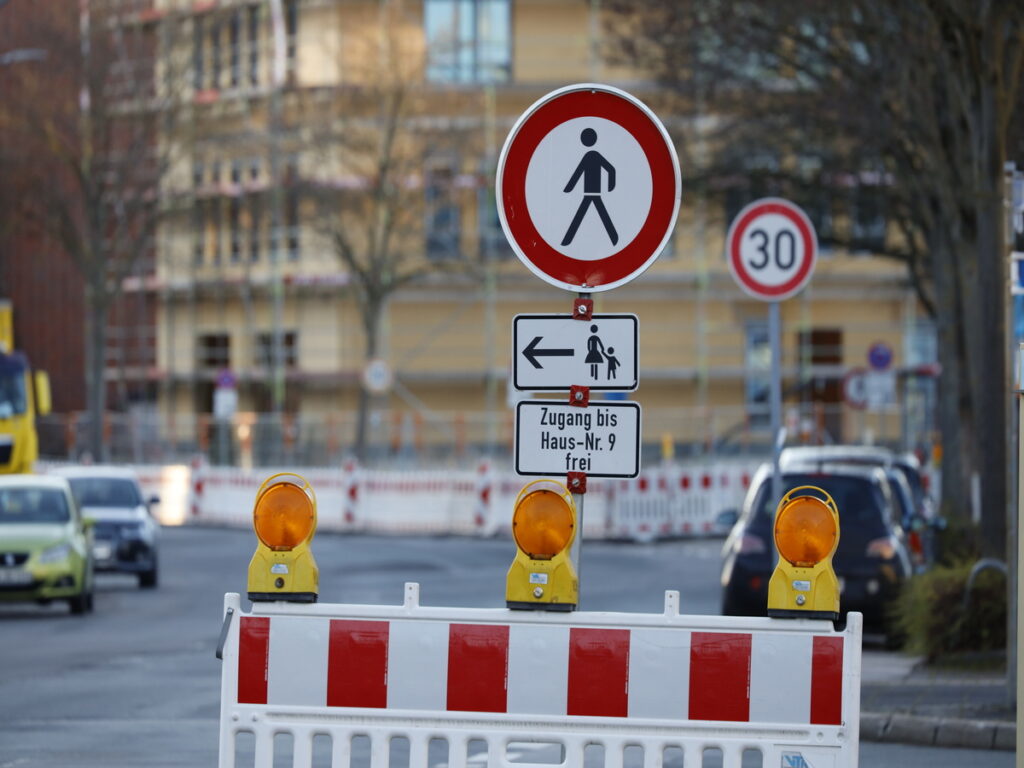
La sostenibilidad en la seguridad vial ahora es muy importante en todo el mundo.
- Soltares de carreteras utilizan materiales ecológicos como plásticos reciclables.
- Los recubrimientos no tóxicos ayudan a reducir el desperdicio y proteger el medio ambiente.
- Algunas señales de tráfico tienen paneles solares para ahorrar energía y reducir la contaminación.
- Estos cambios mejoran la seguridad y apoyan los objetivos globales de sostenibilidad.
Elegir materiales verdes ayuda a crear un futuro más seguro y limpio.
Control de llave
- Green Road Signs use plásticos reciclados y materiales biodegradables. Esto ayuda a reducir los desechos y la contaminación.
- El uso de signos sostenibles reduce las emisiones de carbono y ayuda al medio ambiente. También hace que las carreteras sean más seguras y limpias..
- Los materiales fuertes como los metales reciclados hacen que los signos duren más. Esto ahorra dinero para arreglarlos o reemplazarlos.
- Los métodos ecológicos pueden costar más al principio. Pero ahorran dinero con el tiempo y siguen las reglas verdes.
- Gobiernos, empresas, y las comunidades deben trabajar juntas. Este trabajo en equipo ayuda a promover ideas ecológicas de seguridad vial.
El impacto ambiental de los siglos de carretera tradicionales

Fabricación intensiva en recursos
Hacer soportes de letreros de carretera tradicionales utiliza muchos recursos. Las fábricas necesitan materiales como el acero y el plástico, que toman energía para hacer. Este uso de energía crea gases de efecto invernadero que dañan el planeta. Las máquinas en las fábricas también causan contaminación durante la producción. La mayor parte de esta energía proviene de la quema de combustibles fósiles, que daña el entorno aún más.
Materiales y desechos no reciclables
Muchos puestos de letreros viejos están hechos de materiales que no se pueden reutilizar. Los plásticos y los recubrimientos a menudo tienen productos químicos que dejan de reciclar. Cuando estos soportes se desgastan, se convierten en basura. Es posible que vea letreros antiguos sentados en vertederos durante años sin descomponer. Esta basura ocupa espacio y filtra productos químicos dañinos en el suelo y el agua.
Contribución de contaminación y vertedero
El signo de carretera tradicional es contaminado de muchas maneras. Las fábricas liberan productos químicos dañinos en el aire y el agua al hacerlos. Después de ser tirado, Estos soportes a menudo terminan en vertederos. Con el tiempo, fugan toxinas que duelen las plantas, animales, y gente. Con tantas señales de carretera en todo el mundo, El daño se suma rápidamente.
Cambiar a materiales ecológicos es importante para mantener las carreteras seguras y proteger la naturaleza.
Innovaciones en el signo de tráfico ecológico
Plásticos reciclados para puestos de signo de carretera
Los plásticos reciclados están cambiando la forma en que se hacen los soportes de la carretera. Cortan los desechos y reducen la necesidad de nuevos materiales.. Un estudio del Universidad de Missouri muestra su uso en infraestructura. Estos plásticos, ya utilizado en las carreteras, puede hacer fuertes señales de tráfico. El uso de plásticos reciclados ayuda a reducir la basura en los vertederos y admite objetivos verdes.
Los soportes de letreros de carretera hechos de plásticos reciclados son duros y duraderos. Cumplen con las reglas de seguridad, Mostrar materiales ecológicos funcionan bien. Las luces solar a menudo se agregan a estos puestos. Esto ahorra energía y reduce el daño al medio ambiente..
Compuestos biodegradables en la señalización
Los compuestos biodegradables traen nuevas ideas a las señales de tráfico ecológicas. Estos materiales se descomponen naturalmente sin dejar desechos dañinos.. Los fabricantes están utilizando fibras y resinas a base de plantas para señales más verdes. Elegir compuestos biodegradables ayuda a reducir la contaminación y la basura a largo plazo.
Estas señales funcionan bien para las necesidades de tráfico a corto plazo.. Después de usar, se descomponen, Evitar la eliminación del vertedero. Esto garantiza la seguridad vial mientras protege la naturaleza.
Metales sostenibles para la durabilidad
Los metales reciclados como el aluminio y el acero son excelentes para letreros de carretera duraderos. Estos metales se pueden reutilizar muchas veces sin perder fuerza. He aquí por qué son perfectos para señales de tráfico ecológicas:
| Característica | Descripción |
|---|---|
| Resistencia del material | Los metales reciclados son tan fuertes como los regulares. |
| Longevidad | Manejan el mal tiempo, Necesitando menos reemplazos. |
| Impacto ambiental | Menos reemplazos significan menos residuos y recursos guardados. |
| Eficiencia energética | Nuevos métodos de producción usan menos energía, cortando la contaminación. |
El uso de metales reciclados mantiene letreros de carretera fuertes y ecológicos. Estos materiales cumplen con las reglas de seguridad y muestran que las soluciones verdes pueden funcionar bien.
Recubrimientos no tóxicos y aplicaciones de goma
Los recubrimientos no tóxicos y el caucho están haciendo letreros de carretera ecológicos. Estos cambios ayudan al medio ambiente mientras mantienen los equipos de tráfico seguros y fuertes.. El uso de mejores materiales puede reducir la contaminación y apoyar los esfuerzos verdes.
Los recubrimientos no tóxicos evitan que los productos químicos nocivos entren en el suelo y el agua. Los recubrimientos viejos a menudo tenían ingredientes tóxicos que duelen la naturaleza. Los recubrimientos ecológicos usan materiales más seguros para proteger el medio ambiente. También facilitan el reciclaje, reduciendo los desechos de los vertederos.
El caucho hecho de nuevas fuentes tiene beneficios adicionales. Por ejemplo:
- Un neumático de bicicleta de Dandelion Roots lanzado 25% Menos productos químicos dañinos.
- El dispositivo del colectivo de neumáticos atrapado 60% de partículas de neumáticos, Reducción de la contaminación.
- Jardines de lluvia en ciudades de goma atrapadas, mostrando cómo ayudan a la naturaleza.
Estos ejemplos muestran cómo los materiales e ideas verdes pueden ayudar. El caucho del látex natural o los neumáticos reciclados es fuerte y ecológico. Dura mucho tiempo y utiliza menos recursos no renovables..
Elegir recubrimientos no tóxicos y goma verde ayuda al planeta. Estas actualizaciones protegen la naturaleza y mantienen las señales de carretera seguras y duraderas..
Beneficios de soluciones de señalización sostenible
Reduciendo las emisiones de carbono
Los signos ecológicos ayudan a reducir las emisiones de gases nocivos. El uso de plásticos y metales reciclados ahorra energía durante la producción. Este cambio reduce la contaminación y apoya los objetivos verdes globales. Los signos de energía solar usan menos energía, haciéndolos mejores para el planeta.
Los letreros digitales también ayudan a reducir las emisiones. Usan menos electricidad que los sistemas más antiguos. Estas señales de tráfico reemplazan los materiales impresos, Guardar papel y reducir la basura. Elegir signos ecológicos ayuda a limpiar el aire y proteger la tierra.
Apoyo a la reutilización y reciclaje
Los signos ecológicos promueven los materiales de reutilización y reciclaje. En lugar de tirar viejas señales, Se reutilizan metales como el aluminio y el acero. Este proceso ahorra recursos y recorta desechos. Los materiales biodegradables se descomponen naturalmente, No dejando sobras dañinas.
Los letreros digitales también reducen los desechos reemplazando el papel con pantallas. Dejan de que la basura de papel se acumule en vertederos. La siguiente tabla muestra cómo los signos ecológicos marcan la diferencia:
| Beneficio | Descripción |
|---|---|
| Menos desperdicio de papel | Las señales digitales reemplazan los materiales impresos, Guardar mucho papel. |
| Uso de energía más bajo | Las pantallas digitales necesitan menos energía, Ahorrar dinero y energía. |
| Mejor compromiso | Las señales digitales captan la atención con imágenes emocionantes. |
Reciclar y reutilizar materiales ayudan al planeta y mantenga a las carreteras seguras.
Durando más y mantenerse fuerte
Se hacen letreros ecológicos para durar mucho tiempo. Los metales reciclados como el aluminio y el acero manejan bien el mal tiempo. Los recubrimientos no tóxicos y el caucho verde hacen que las señales sean más fuertes y seguras.
Estos letreros de ayuda de materiales duran más, Ahorrar dinero y recursos. Los letreros fuertes permanecen visibles y confiables en todas las condiciones. Elegir signos ecológicos significa proteger la naturaleza y mantener a las personas seguras.
Ahorros de costos y siguientes reglas verdes
El uso de stands de carretera ecológicos ahorra dinero y cumple con las reglas verdes. Tecnología de ahorro de energía y materiales fuertes menores costos. Por ejemplo, Uso de luces LED 80% menos energía que las bombillas viejas. Esto reduce las facturas de energía y reduce la frecuencia con la que necesita reemplazos, Ahorrar dinero con el tiempo.
Los signos ecológicos también ayudan a seguir las leyes ambientales. Muchos gobiernos ahora requieren proyectos públicos para usar materiales verdes. Elegir plásticos o metales reciclados ayuda a cumplir con estas reglas y evita multas. El uso de materiales biodegradables significa menos basura en los vertederos, Ayudando al planeta.
Los ahorros van más allá de los costos de energía. Los materiales fuertes duran más en mal tiempo, Cortar necesidades de reparación. Los metales reciclados como el aluminio se mantienen fuerte durante años, Reducción de reemplazos. Esto hace que las señales ecológicas sean inteligentes, inversión duradera.
Las señales tradicionales dañan el medio ambiente. La EPA dice 10% de los desechos plásticos del vertedero provienen de señales. Cambiar a prácticas verdes reduce este desperdicio y ahorra dinero. Estos signos mejoran la seguridad y muestran que le importa la naturaleza.
Agregar letreros ecológicos a sus proyectos ahorra dinero y ayuda a la Tierra. Es una forma inteligente de proteger su presupuesto y el planeta para el futuro..
Desafíos en la adopción de prácticas sostenibles
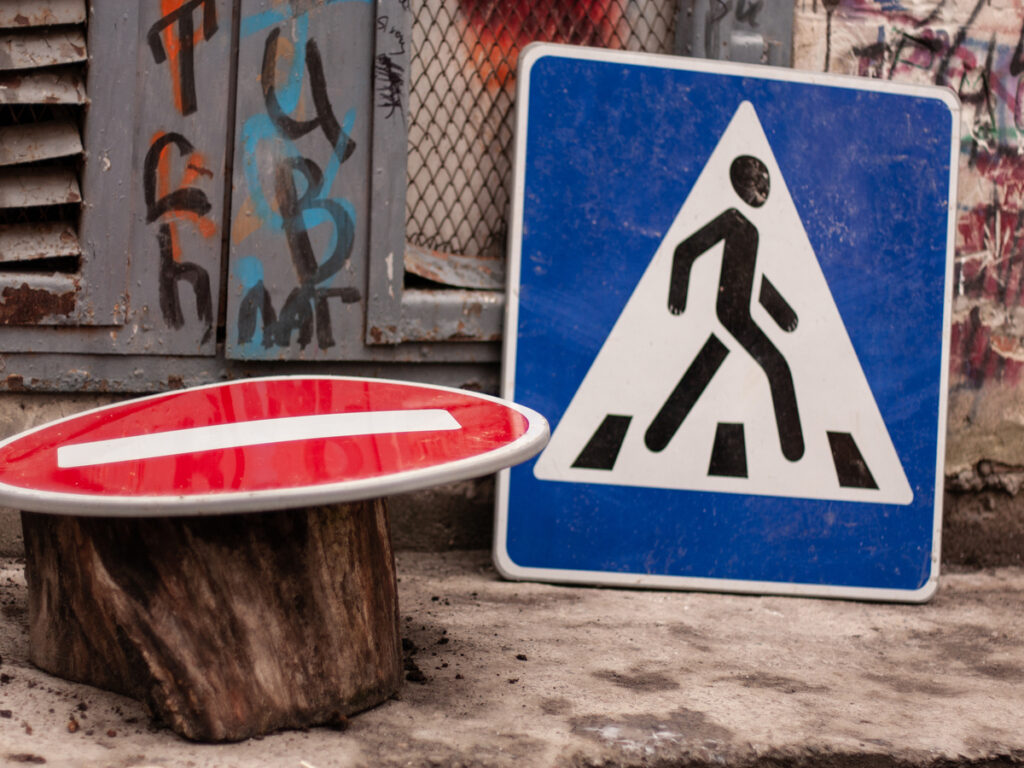
Mayores costos iniciales
Cambiar a materiales verdes para señales de tráfico costos más al principio. Las fábricas necesitan nuevas herramientas y métodos, Aumento de los costos de producción. Los metales reciclados y las piezas biodegradables pueden ser más caras que las regulares. Estos costos adicionales pueden evitar que las personas elijan opciones verdes., especialmente con presupuestos ajustados.
¿Por qué estos costos son más altos?? Los materiales verdes necesitan formas especiales de hacerlos. Estos usan menos energía pero son más complejos. Es importante verificar tanto los costos como los beneficios de los cambios de seguridad vial. Esto significa mirar costos como configuración y cuidado, más beneficios como mejores ganancias de salud y trabajo. Conocer los efectos a largo plazo de las prácticas verdes lo ayuda a decidir si el costo inicial vale los ahorros futuros.
Equilibrar el rendimiento con la sostenibilidad
Hacer que las letreros de la carretera sean seguros y verdes es difícil. Los materiales verdes deben reducir el daño a la naturaleza, pero aún así estar seguros. Las señales deben manejar el mal tiempo, mantenerse despejado, y durar mucho. Para hacer esto, Se necesitan un diseño y pruebas cuidadosas para que las opciones verdes no dan un rendimiento.
Los líderes a menudo luchan por elegir beneficios a largo plazo sobre ganancias de dinero rápido. Malentendiendo ideas como “Salud en todas las políticas” puede conducir a malas elecciones. Diferentes grupos deben trabajar juntos para resolver estos problemas.. Cuando lo hacen, Pueden hacer planes que cumplan con los objetivos verdes y de seguridad.
Conciencia limitada y adopción
No saber sobre letreros verdes ralentiza su uso. Muchos en anuncios al aire libre y seguridad vial no saben sobre opciones ecológicas. Esta falta de información detiene el crecimiento verde y ralentiza una mejor infraestructura.
Los estudios muestran este problema. Encuentran personas que pierden opciones de publicidad verde debido a poca información. Enseñar a estos grupos sobre materiales verdes’ Los beneficios pueden traer cambio. Cuando vea cómo esto ayudan a la seguridad y al planeta, you can push for them in public projects.
Regulatory and Certification Hurdles
Using sustainable methods in road safety can be tricky. Rules and certifications often slow down eco-friendly solutions, even if they help the planet and improve safety.
Complex Certification Processes
Eco-friendly materials need lots of testing to meet safety rules. Groups that certify materials want proof they work as well as old ones. Por ejemplo, recycled plastics must show they last in bad weather. Testing takes time and money, which delays using green materials.
Consejo: Work with experts to make the certification process easier.
Inconsistent Regulations Across Regions
Different places have different rules for road safety tools. A material allowed in one country might not pass in another. This makes things confusing and costs more for makers. Es posible que las empresas necesiten cambiar de productos para que se ajusten a muchas reglas, desaceleración del progreso verde global.
Soporte limitado para nuevos materiales
Los nuevos materiales a menudo carecen de datos a largo plazo, Haciendo la aprobación más difícil. Los grupos a cargo pueden no confiar en compuestos biodegradables o recubrimientos no tóxicos. Prefieren materiales más antiguos con uso probado, Incluso si dañan el medio ambiente más.
Altos costos de cumplimiento
Las siguientes reglas pueden costar mucho. Probar y obtener certificado se suma al precio de los materiales verdes. Estos costos pueden evitar que las empresas más pequeñas elijan opciones ecológicas. Pero saber cómo la sostenibilidad ayuda a largo plazo puede hacer que estos costos valgan la pena.
Nota: Algunos gobiernos ahora ofrecen subvenciones o dinero para apoyar proyectos verdes. Verifique estos para ayudar a cubrir los costos.
Pasar estas reglas y certificaciones requiere esfuerzo y trabajo en equipo. Permaneciendo informado, Puede ayudar a crear carreteras más seguras y verdes.
Estudios de casos de puestos de signo de carretera ecológicos
Visión cero de Suecia y soportes de plástico reciclado
Visión cero de Suecia Su objetivo es detener las muertes y lesiones del tráfico.. Para ayudar, Suecia utiliza puestos de letreros de carretera hechos de plásticos reciclados. Estos stands son fuertes y ecológicos, Incluso en clima duro. Los inviernos escandinavos necesitan señales duraderas, y los plásticos reciclados funcionan bien. Eligiendo estos materiales, Suecia corta los desechos y ayuda al planeta. Este plan mantiene las carreteras seguras para conductores y peatones mientras protege la naturaleza.
Equipo de tráfico que cumple con LEED en los EE. UU..
En los EE. UU., Las ciudades ahora usan letreros de tráfico verde para Estándares LEED. Estos proyectos utilizan metales como aluminio y acero que se pueden reciclar. Estos metales duran mucho tiempo, Se necesitan menos reemplazos. Algunas ciudades también usan letreros con energía solar para ahorrar energía y reducir la contaminación. Cumplir con las reglas LEED muestra cómo las ideas verdes pueden mejorar la seguridad y ayudar a la tierra.
Innovaciones de señalización biodegradables en Japón
Japón utiliza materiales biodegradables para letreros de carretera temporales para reducir la basura. Estos signos están hechos de plantas y se descomponen después de su uso. Son excelentes para proyectos a corto plazo como el trabajo de construcción.. Las señales tradicionales se agregarían a los vertederos, Pero estos no. La idea de Japón muestra cómo los materiales verdes pueden funcionar bien y proteger el medio ambiente..
Trabajando juntos para carreteras más verdes
Hacer caminos más seguros y ecológicos necesita trabajo en equipo. Gobiernos, empresas, y los grupos ambientalistas deben unir fuerzas. Juntos, Pueden convertir ideas inteligentes en soluciones reales para mejores caminos..
Gobiernos y empresas que unen fuerzas
Los gobiernos ayudan dando recompensas a las empresas que utilizan materiales reciclados. También pueden establecer reglas para impulsar los métodos de producción ecológicos. Las empresas comparten su conocimiento para hacer señales de carretera fuertes y verdes. Este trabajo en equipo crea productos que son seguros y buenos para el planeta..
Grupos ambientalistas que lideran el camino
Los grupos ambientalistas trabajan duro para promover prácticas verdes. Muestran cómo las señales de carretera regulares dañan la naturaleza y ofrecen mejores opciones. Estos grupos proporcionan hechos y estudios para apoyar materiales ecológicos. Trabajando con ellos, Las empresas y los líderes aprenden por qué importan las elecciones verdes.
Comunidades ayudando
La gente local puede ayudar a que las carreteras sean más ecológicas. Los programas de reciclaje pueden recolectar materiales para hacer letreros de carretera. Las escuelas y los clubes pueden enseñar a otros sobre letreros ecológicos. Cuando las comunidades se unen, presionan por el cambio y tienen un gran impacto.
Consejo: Únase a los proyectos locales de reciclaje o verde para ayudar al planeta.
Países compartiendo ideas
Los países pueden unirse para compartir ideas inteligentes. Suecia usa plásticos reciclados, y Japón hace señales que se descomponen naturalmente. Aprendiendo el uno del otro, Las naciones pueden adoptar estas ideas más rápido. Trabajar juntos en todo el mundo extiende prácticas verdes a más lugares.
El trabajo en equipo es clave para las carreteras más seguras y una tierra más limpia. Cuando todos trabajan juntos, Construimos un futuro mejor.
El signo de carretera antiguo se duele la naturaleza de muchas maneras. Hacerlos usa muchos recursos y energía, que contamina el aire. Muchos están hechos de materiales que no se pueden reciclar. Cuando se tira, se sientan en vertederos y fugas de productos químicos dañinos.. Estos problemas muestran por qué necesitamos mejores opciones.
Los materiales ecológicos como plásticos reciclados y compuestos biodegradables son excelentes opciones. Ellos duran mucho, crear menos basura, y menor contaminación. Elegir estas soluciones verdes ayuda a mantener las carreteras seguras y el planeta limpio.
Seleccionando marcos de letreros ecológicos, puedes ayudar a proteger la tierra. Estos cambios hacen que las carreteras sean más seguras y la naturaleza más saludable. Juntos, Podemos crear un futuro mejor para todos.
En OPTRAFICO, La sostenibilidad está en el corazón de nuestro proceso de diseño. Usamos materiales reciclables, fabricación de baja emisión, y componentes duraderos para reducir el impacto ambiental sin comprometer la seguridad. Nuestro marcos de letreros de tráfico ecológicos están construidos para funcionar en condiciones difíciles mientras apoyan más verde, infraestructura más inteligente. Elegir Optraffic significa elegir productos que no solo sean confiables, sino que también son responsables.
Preguntas frecuentes
¿Qué son los puestos de signo de carretera ecológicos hechos??
Uso de letreros de carreteras ecológicos plásticos reciclados, materiales biodegradables, y metales sostenibles. Estos materiales ayudan a reducir la basura y la contaminación mientras se mantienen fuertes y seguros..
¿Los materiales ecológicos cuestan más que los tradicionales??
Sí, Costan más al principio. Pero ahorran dinero más tarde durando más, Necesitando menos soluciones, y cumplir con las reglas verdes que pueden traer fondos adicionales.
¿Cómo ayudan los plásticos reciclados al medio ambiente??
Los plásticos reciclados reducen la basura en los vertederos y reducen la necesidad de nuevos materiales. También usan menos energía para hacer, que reduce los gases nocivos. ♻️
Son letreros de carretera biodegradables tan duraderos como los tradicionales?
Los signos biodegradables son los mejores para uso a corto plazo, como construcción. Se descomponen naturalmente después de ser utilizados, Por lo tanto, no son ideales para las necesidades a largo plazo.
¿Pueden los letreros de carretera ecológicos manejar el clima extremo??
Sí, Los metales reciclados y los recubrimientos no tóxicos los hacen fuertes en mal tiempo. Estas señales cumplen con las reglas de seguridad y funcionan bien en calor., frío, o lluvia.
Consejo: Siempre revise los detalles del material para que coincida con su clima local.

